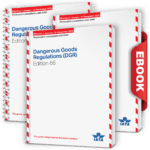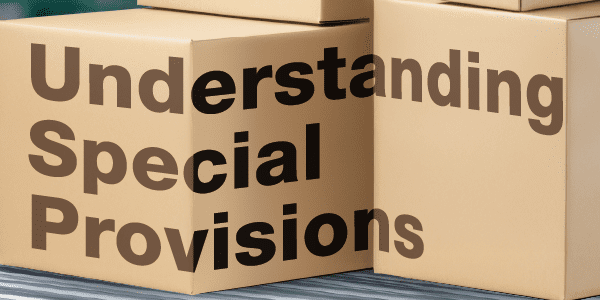
Addressing Packages Containing Dangerous Goods
When it comes to shipping dangerous goods, ensuring proper labeling, and addressing is crucial for safety and compliance. While the process may seem straightforward, nuances exist within regulations that vary by region and mode of transportation. Let’s delve into some key considerations:
Addressing Standards in North America:
In Canada, there is no set standard for the placement of name and address on packaging for dangerous goods.
In the United States, regulations under 49 CFR provide exemptions for non-bulk packaging, particularly for shipments transported within the same carrier (e.g., truckload shipments).
49 CFR Regulations:
Under 49 CFR 172.301 subparagraph (d), exemptions exist for non-bulk packaging, especially for shipments transported without transfer between carriers.
This means that if you’re shipping a truckload of multiple packages without transfer, addresses may not be required on individual non-bulk packaging, but they must be included on the shipping document.
IATA Regulations:
The International Air Transport Association (IATA) regulations are more stringent, particularly regarding addressing requirements.
Under IATA regulations 7.1.4.1 (b), both the shipper’s and consignee’s name and address must be provided on each packaging, preferably on the same surface as the UN number, proper shipping name and hazard class labels, but there is allowance if there isn’t enough room on the same surface, the name and address can be placed elsewhere. However, the air carriers may reject packages if they believe sufficient space existed on the designated surface.
Practical Tips for Compliance:
Ensure compliance with relevant regulations based on the mode of transportation and destination.
Prioritize clarity and visibility of the name and address information on packaging.
Double-check regulations and guidelines to avoid rejections and delays in shipment.
Consult with regulatory experts or utilize resources such as ICC’s regulatory helpline to address any uncertainties or concerns.
In conclusion, while addressing packages containing dangerous goods may seem straightforward, adherence to specific regulations and standards is crucial. By understanding and following applicable guidelines, you can ensure safety, compliance, and efficiency in shipping processes, thereby minimizing risks and potential rejections.
Do you have questions about shipping dangerous goods? Our team of experts is just a call away for our customers at 855.734.5469 or send us an email, we’re happy to help. For more information regarding Packaging, check out our UN Performance Packaging FAQ.
Stay up to date and sign up for our newsletter!
We have all the products, services and training you need to ensure your staff is properly trained and informed.
 IATA DGR IATA DGR |
 UN Approved UN ApprovedPackaging and Boxes |
 Hazard Class Labels Hazard Class Labels |





